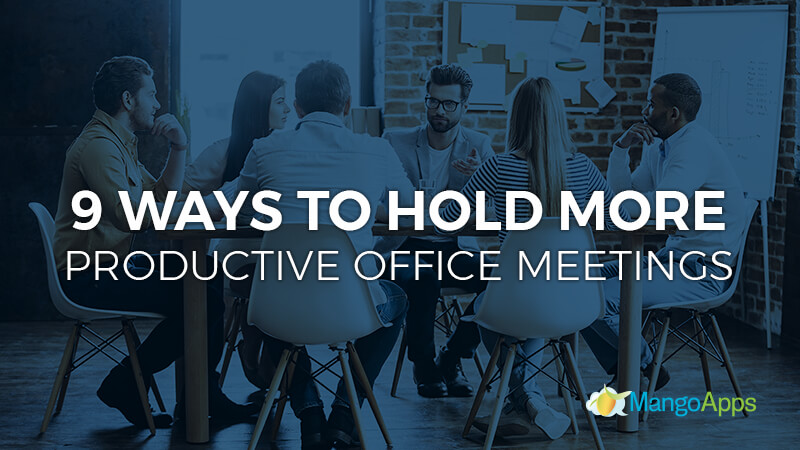Surveys show that the average organization spends about 15% of its time in unproductive meetings. This can be frightening when you consider the amount of lost revenue this contributes to. This issue raises the question, how can companies reduce these numbers? One step in the right direction is to make better use of available tools. This can lead to much more productive office meetings.
With these 9 minor adjustments, your organization can transform meetings into an efficient exchange of information and ideas:
#1: Identify A Real Need
While this might seem obvious, before scheduling a meeting, think about if it is really necessary. Much of the information and data sharing that required meetings in the past can now be easily shared through phones, emails, or internal collaboration tools. Collaboration tools make it easy for employees to brainstorm and work together on ideas, even from remote locations. Meetings take time and resources away from everyone and should be saved for when there is a real need.
#2: Limit Meeting Members
Most meetings should have no more than 10 members. Exceeding this makes planning more difficult in almost every aspect. Not to mention, holding a meeting with a large number of people makes them last longer and be less effective. The more people present, the less time spent on the objective of the meeting. Companies create more productive office meetings when small groups can work together based on their unique objectives and needs.
#3: Organize An Agenda
Without a clear agenda, any meeting is headed for trouble. Even if it’s just a brainstorming session, it is helpful to have an outline of the task at hand. This helps leaders take control of their meetings by establishing clear priorities. Organizing an agenda also allows leaders to share relevant documents ahead of time. This leads to participants reviewing the content in advance, and further reducing the length of the meeting.
#4: Don’t Get Distracted
Ensuring team members stay on task is just as important as creating an agenda. While avoiding tangents may feel difficult, staying focused will lead to shorter meetings and allow important information to be addressed before everyone gets tired. During longer meetings when breaks are needed, make sure that they do not take too much time or become excessive distractions. Lastly, information presented at meetings should be discussion based and focused on outcomes. Lists of data or background information can be shared separately through collaboration tools.
#5: Stick To The Schedule
Meetings need to have a designated start and end time. Keeping meetings on a schedule is respectful to everyone involved and makes organization easier. When team members know that a meeting will end on time they can plan the rest of their day more effectively. Shorter meetings also tend to be more productive office meetings. When employees know that a meeting will end on time there is less temptation to get off task.
#6: Prepare Beforehand
Every employee in the meeting needs to be ready to share and participate. This means that ideas and reports need to be well structured, and thought out ahead of time. Enterprise tools are incredibly helpful for pre-meeting preparation by providing powerful project management tools that seamlessly organize information. Even preparing for just a few minutes ahead of time can make a huge difference in creating productive office meetings.
#7: Schedule A Room
Valuable meeting time is often wasted looking for a room with the technology you need. Scheduling a space in advance ensures that meetings start on time and are equipped with all of the necessary resources. Scheduling a room also means that the meeting has been planned in advance, which helps motivate employees to come better prepared.
#8: Keep Everyone Engaged
When meetings are lengthy it can be easy for members to get distracted or bored. Shifting topics or taking a short break can help members stay engage and focused on what is ahead. These breaks should only be used to help members re-engage and get back on track. They should not become distractions. Keeping everyone focused and attentive is one of the best ways to create productive office meetings.
#9: Review Action Items
Project meetings can be an ongoing saga and often need an element of continuity. Briefly reflecting and reviewing the minutes of the previous meeting can help refresh memories and give more context to the discussion. This is where keeping track of the meeting minutes becomes a priority. Modern workplace software solutions can provide all kinds of options to keep track of important minutes and information and make it easy to share them with others who were unable to attend.
MangoApps
Meetings are an irreplaceable part of workplace culture but they don’t have to be a waste of time. It only takes a little extra effort to hold more productive office meetings. MangoApps provides companies with the perfect platform to organize and collaborate from anywhere in the world. We help companies not only hold more efficient meetings, but also create a more collaborative environment.








